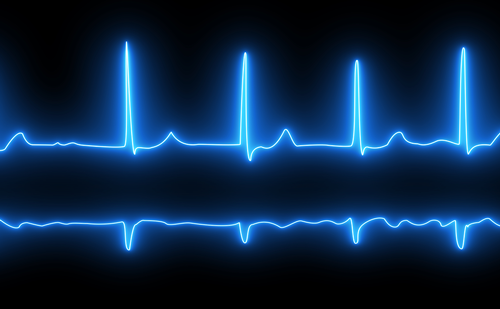Introduction: Cardiac resynchronization therapy (CRT) is widely used for the management of patients with heart failure (HF) and severe left ventricular (LV) systolic dysfunction with a wide QRS duration.1 However, there is currently limited evidence on its effectiveness in patients with atrial fibrillation (AF). The purpose of this study is to investigate response to CRT in patients with AF compared to sinus rhythm (SR) in a large UK cohort.
Methods: This was a single-centre retrospective observational study of patients receiving CRT-P/D/upgrade between 2016 to 2020. Demographic characteristics, ECG parameters, biventricular pacing (BiV) percentage, and referral for AV node ablation (AVNA) were extracted from electronic patient records. The primary outcome was all-cause mortality and change in NYHA class at 1-month post-procedure. Outcomes were compared between patients in SR, AF not referred for AVNA, and those referred upfront for CRT and AVNA strategy.
Results: A total of 1,072 patients were included. Average follow-up was 32.1 ± 13.6 months. A total of 576 patients (53.7%) had AF and 129 (22.4%) patients were referred for initial CRT and AVNA strategy. A further 29 patients had subsequent AVNA over the course of the study. Mean time between implant and ablation was 247.0 ± 374.0 days. Patients with AF without referral for AVNA were significantly older (p<0.001) and had more co-morbidities than those in SR. QRS duration was similar (p=0.551). Patients with AF with AVNA referral were younger (p=0.015) and had fewer co-morbidities than those with AF without AVNA referral. QRS duration was lower (p<0.001), and ejection fraction was greater (p=0.022). After CRT, mean BiV% 1-month post-implant for AF was 81.3% versus 87.5% in SR. Mortality was greatest in patients with AF without referral for AVNA (25.3%), compared with 9.1 % for those who had SR and 14% with initial referral for AVNA (p<0.001). Mean change in NYHA Class 1-month post-implant was greatest in patients with AF referred for AVNA (-0.41) versus those with AF not referred for AVNA (-0.28) and those who had SR (-0.34) (p=0.006). A significant survival benefit was observed in SR patients with LBBB versus non-LBBB (OR: 0.36, 95% CI [0.18–0.72], p=0.003). This association was not seen in patients who had AF (OR: 1.08, 95% CI [0.68–1.74], p=0.737).
Conclusion: Patients referred for CRT who were (1) in SR and (2) initially referred for AVNA had substantially reduced mortality than those patients with AF referred for CRT without initial AVNA. This may be driven by the underlying HF syndrome and co-morbidities of these different groups. The effect of LBBB on outcome was only present in those patients in SR. Careful consideration should be given as to whether patients with AF should be referred for CRT who otherwise fulfil recommended guidance for CRT. ❑
















